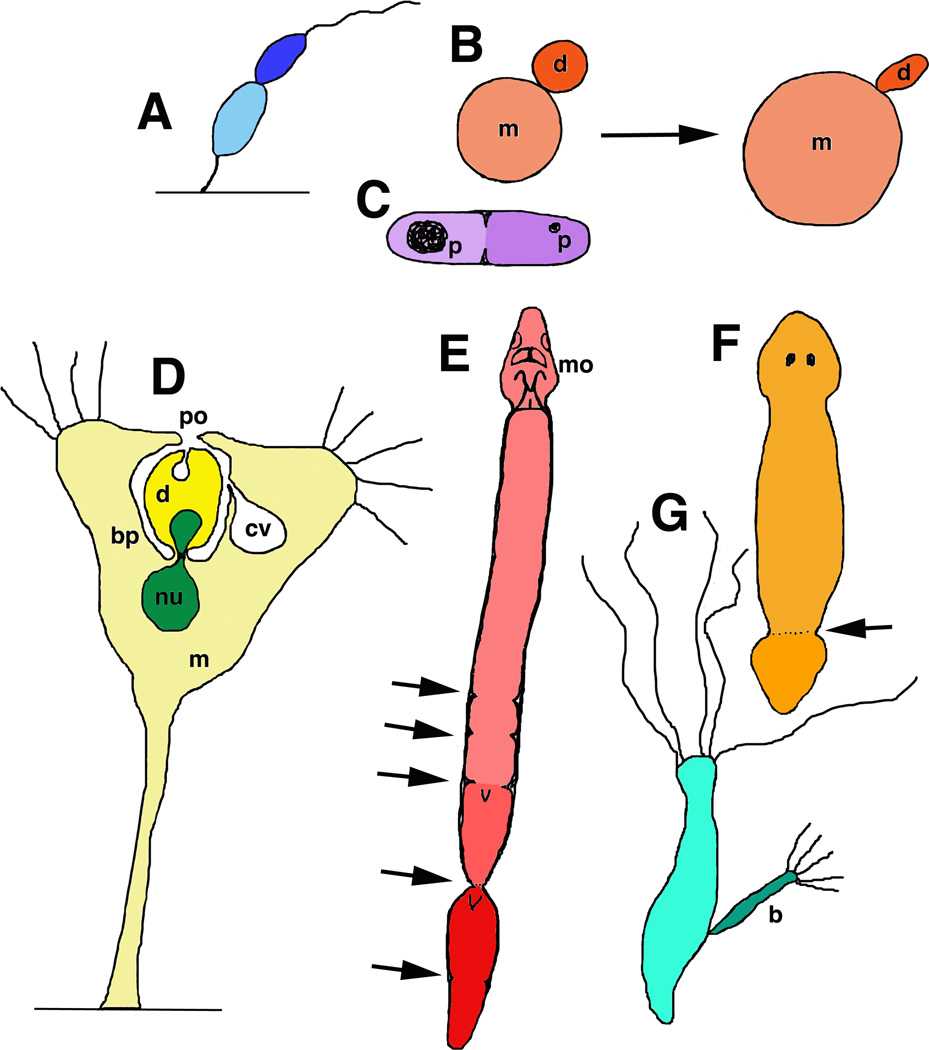Figure 3.
Asymmetric asexual reproduction and senescence. All drawings are original and based on drawings and micrographs in the cited references. A–E. These are examples of asymmetric cell/body division where the “mother” shows signs of senescence (see text for details).A. The sessile, stalked bacterium, Caulobacter crescentus, produces motile swarmer cell progeny (Ackerman et al., 2003). B. Budding yeast (Saccharomyses cerevisiae) mother cells (m) get bigger as they age and produce more ellipsoidal daughters (d; Lee et al, 2012). C. In contrast, fission yeast, such as Schizosaccharomyces pombe, divide symmetrically under normal conditions. But under stress, there is asymmetric accumulation of protein aggregates (p) leading to aging of the cell that retains most of these aggregates. D. Stalked mother cells (m) of some sessile suctorian ciliates, such as Acineta tuberosa (Bardele, 1970) and Tokophrya infusionum (Rudzinska, 1961; Millecchia and Rudzinska, 1970; Karakashian et al., 1984), produce an offspring in a brood pouch (bp) that is born through a birth pore (po). The brood pouch is associated with the contractile vacuole/excretory system (cv; the smaller contractile vacuole of the offspring is shown also, but not labeled). Also note how a portion of the mother’s macronucleus (nu) pinches off into the offspring. E. The flatworm, Stenostomum incaudatum (Sonneborn, 1930; Nuttycombe and Waters, 1938; Newmark and Sánchez Alvarado, 2002), produces a caudal chain of developing offspring. Arrows show locations rostral to the heads of the forming juveniles (note the pinching in of the digestive tract), where they will separate, eventually, from the mother. mo, mouth. F,G. In contrast to the previous examples, asymmetric asexual reproduction in some planaria by fission (F; arrow; Saló, 2006)and hydras via budding (G; b; Bosch, 2009) may not lead to increased senescence of the mother. In these cases, rapid cell proliferation continuously replaces all cells of the body in a short time period, thus continuously renewing the “mother.”

